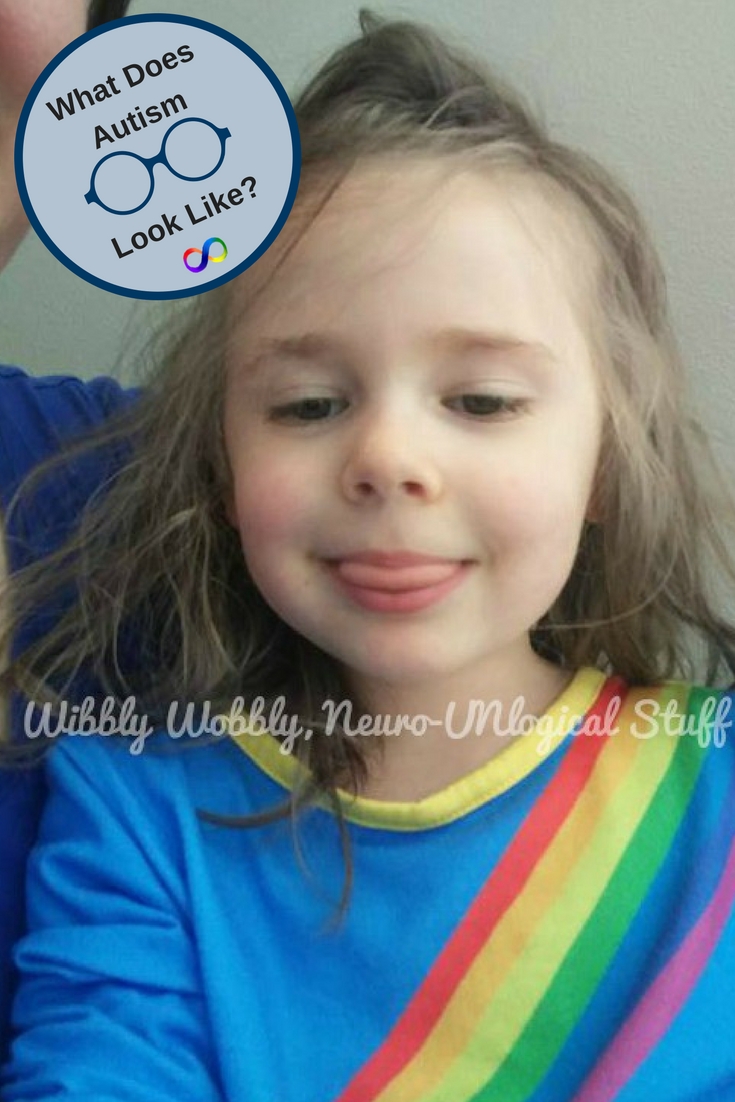Hopefully by now everyone has heard the expression “if you’ve met a person with autism, you’ve met one person with autism.” Autism is as individual as the individual, but it boils down to social deficits, nervous system differences from the norm, and stronger than commonly accepted interest in things that the general populace isn’t interested in. Lady Bug was officially diagnosed as ASD3 or autism level 3 two years ago. She was also diagnosed with Sensory Processing Disorder (SPD), a global developmental delay, and a speech delay. Those last three things are the things that cause most of our struggles. None of those things are autism. They are the things people notice the most, but again, none of those are autism. They are all things that are co-occurring or co-morbid, but they can occur in non-autistic children. So I’m not going to be talking about those things in this post because this isn’t SPD Awareness Month or any of the others; it’s Autism Awareness Month and people need to stop confusing all the co-occurring conditions with autism.
Social deficits: children are warned off from talking to strangers. And then strangers in the grocery store get offended when children don’t respond to them when we’re in line at the register. This is just one of many ridiculous contradictions of social conventions that non-autistic/neurotypical (NT) children somehow subconsciously intuit and learn without even trying, and autistic kids don’t. Lady Bug usually only interacts with people she knows very, very well, though occasional she will glance and smile at the occasional kind stranger. Even with people she lives with, her initiated social engagement is limited. It is important to meet Lady Bug on her terms, with her interests, or she just isn’t interested; she has other things she’d rather be doing. And that’s okay. Honestly, with as socially/attention demanding 4 year olds can be, I think it’s awesome she can be so independently happy. One of the wonderful things about homeschooling is that there is no social demands for her to be more socially interactive right now. She is free to develop on her own, alternative growth trajectory instead of having to obey in a classroom environment right now. For now she is learning in a safe and comfortable environment that talking to others can be worthwhile and enjoyable. Strangers can wait.
Nervous System Differences: this one can be a bit hard to separate from her SPD, but I’m going to try. One of the ways that nervous system differences translates into observable differences from the norm is stimming. Stimming (stim is the noun form) is short for self-stimulation behavior. An often but not always repetitive behavior that engages the persons sense in a way that soothes or pleases the individual engaged in it. In the past two years since Lady Bug was officially identified as autistic she has changed her favorite stims several times. When she was 2 years old, tapping two wood blocks together while walking around was her favorite. For a long time we didn’t leave the house without making sure we had two identical blocks (that was an important factor) for her to “clack” with. When she was 3 years old she started moving things to the side of her face to see with her periphery vision. An NT brain probably doesn’t think anything of that, but her autistic brain loves the feeling she gets from it. Lady Bug also puts a lot of things in her mouth, especially too big things that stretch the tendons in her face. She also enjoys rubbing things on her mouth and cheeks, and tapping things on her teeth. I buy ceramic things specifically for her to stim with. It would set my nerves on fire if I did it, but for her it’s wonderful.
Special Interests: I saw an article the other day (and of course now I can’t find it) that basically said that autistic girls are more likely to have special interest in things that are expected of girls to be interested in, such as dolls or make-up or horses, so their intense interest is not pathologized and that’s yet another reason why girls are less often identified as autistic than boys. Lady Bug cycles through loving and only wanting to watch and script from Little Einsteins, Signing Time, LeapFrog dvds, or Super Why. Currently she’s all about Super Why. She also goes through interests in different themes, like for the past two weeks she has been very interested in bunny rabbits, which led to an amazing interaction with the Easter Bunny at a recent event. I love being able to capitalize on her interests and using them as a way to engage and teach her. It does make planning impossible, but shifting to the new interest when she does is hands down the best way to engage her. I have hundreds of laminated word cards thanks to the past 8 months of different and changing interests. That’s hundreds of words that I’m pretty sure she knows now, even if she rarely uses them.
“If you’ve met a person with autism, you’ve met one person with autism.” This month for Autism Acceptance Month, every Tuesday I’m going to prove the truth of how autism is different in every person by describing what it looks like in each autistic person in our house. Because autism doesn’t always look like what you’d expect.

Thanks for giving us a glimpse into one person’s experience of autism. I appreciate how you pull apart the various co-occurring issues.
LikeLiked by 1 person
Thank you for getting it. So many people blame Autism for things that have nothing to do with our struggle.
LikeLiked by 1 person